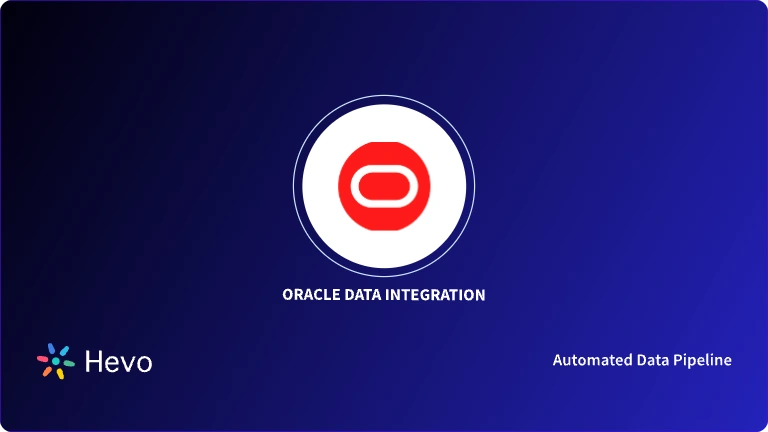 Key takeaways
Key takeawaysWhile MySQL serves well for smaller workloads, Oracle is purpose-built for complex, high-volume enterprise data environments.
- Reduce manual effort with automation: Instead of configuring JDBC paths and migration wizards manually, you can automate the process end-to-end with Hevo’s no-code data pipelines.
- Plan before you migrate: Ensure your environment meets system requirements, configure JDBC drivers, and verify user permissions for smooth data transfer.
- Use Oracle SQL Developer: The built-in Migration Workbench simplifies schema conversion, data mapping, and transfer with minimal manual intervention.
- Optimize for scale and reliability: Oracle’s architecture supports better identity management, high data throughput, and advanced recovery features.
As data volumes continue to grow, many organizations outgrow the limitations of MySQL and look toward Oracle for better performance and scalability. While MySQL is a widely used open-source relational database, it can struggle to support the complex queries, large datasets, and high availability demands of enterprise environments.
Oracle’s architecture makes it easier to manage large data ecosystems, integrate multiple systems, and maintain performance even as your data footprint expands.
In this guide, we’ll walk you through the why and how of migrating from MySQL to Oracle. You’ll learn about the key prerequisites, setup steps, and tools needed to ensure a seamless transition.
Table of Contents
Prerequisites
The prerequisites for setting up MySQL to Oracle Database migration are as follows:
- Before setting up MySQL to Oracle migration, ensure that your environment complies with the requirements of your system.
- Download and install Oracle SQL Developer.
- Configure MySQL server to the client computer.
- Download MySQL Java Database Connectivity Java Archive (JDBC JAR) for the required MySQL server version.
- Make sure that the Oracle user account has the required privileges to create, update, delete, and manage permissions on tables.
Oracle SQL Developer
Oracle SQL Developer is a full-scale integrated development environment for Oracle Database, meant for simplifying database development activities like querying, modeling, and administration. It provides an interface with features such as an SQL worksheet, schema browser, data modeling tools, and PL/SQL debugger. Oracle SQL Developer is free; thus, it is full of features for any developer and database administrator working in Oracle Database environments.
Take a look at 5 Best Replication Tools to automate this integration.
Steps Followed to Migrate Data From MySQL to Oracle
The steps followed to migrate your database from MySQL to Oracle are as follows:
- Step 1: Open MySQL server. Now, backup the MySQL server database that you want to migrate. Open the Oracle server and backup your Oracle database.
- Step 2: Start the Oracle SQL Developer.
- Step 3: From the menu bar, click on the “Tools” option. Then, select the “Preferences” option.
- Step 4: Navigate the tree view and click the “Data ModelerThird Party JDBC Drivers” option. Specify the full path name of the MySQL JAR file location.
- Step 5: Restart the Oracle SQL Developer.
- Step 6: Create a connection to the MySQL database:
- Navigate to the Connections tree view. Right-click on the root node. Select the “New Connection” option.
- Click the “MySQL” tab. Specify all the access details of the MySQL server database.
- Click the “Test” button to ensure that the connection is successful.
- Click the “Save” button.
- Step 7: Now, create a connection to the new Oracle database:
- Navigate to the Connections tree view. Right-click on the root node. Select the “New Connection” option.
- Click the “Oracle” tab. Specify all the access details of the Oracle server (including a superuser and database SID).
- Click the “Test” button to ensure that the connection is successful. Click the “Connect” button.
- Navigate the “Connections” tree view to the list of database tables for the new Oracle connection. Delete all the existing tables and indexes so that all the tables are clean before the connection is established.
- Step 8: In the SQL developer, go to the menu bar, and click on the “Tools” option. Select the “Migration” option. Then click the “Migrate” option.
Hevo simplifies your MySQL data migration process with ease. Effortlessly extract and manage your data, preparing it for seamless integration with your preferred destination. With Hevo:
- Access a wide variety of connectors and blazing-fast Data Pipelines
- Extract & load data from 150+ Data Sources like MySQL straight into your Data Warehouse or any Database destination like MySQL.
- Process and enrich raw granular data using Hevo’s robust & built-in Transformation Layer without writing a single line of code!
Hevo offers a 14-day free trial, allowing you to explore real-time data processing and fully automated pipelines firsthand. With a 4.4 rating on G2, users appreciate its reliability and ease of use—making it worth trying to see if it fits your needs.
Get Started with Hevo for Free- Step 9: Now, a wizard will be displayed. Go to the Repository page, and you can follow the steps to create a connection to the MySQL server.
- Click the “+” icon to create a new connection.
- You can specify the access details for the MySQL server (including a superuser and SID).
- Click on the “Test” button to ensure a successful connection. Then, click the “Save” button. Then, click the “Next” option.
- Step 10: On the Project page, specify the access details and click the “Next” button. Navigate to the Source Database page and select the “Online” Mode. Select the “MySQL connection” you created as the source database connection.
- Step 11: Click the “Next” button. Navigate to the Capture page. Select the MySQL database. Then it will appear in the list on the right. Click the “Next” button.
- Step 12: On the Convert page that appears, you can accept default settings by clicking the “Next” button. On the Target Database page that appears, set the Mode to “Online”. Select the Oracle connection you created for the newer product version as the target database connection.
- Step 13: Clear the “drop target objects” checkbox. Click the “Next” button. On the Move Data page that appears, select the “MySQL Connection” of the older version as the source database connection. Then, click the “Next” button. On the Summary page that appears, you can verify all the details and click the “Finish” button.
- Step 14: You can modify the names of the indexes in the database according to your need:
- In the Connections tree view, you can navigate to the Oracle connection. Select the “open SQL worksheet” option.
- You can rename the indexes with truncated names.
- You can set the default value for each column for each table in the database.
Why Migrate From MySQL to Oracle Database?
- MySQL databases are only flexible for small and large businesses. This is why many users want to migrate from MySQL to Oracle SQL database.
- The MySQL database does not support integration with other email services. At the same time, the Oracle database supports numerous email service integrations. As a result, in many cases, it is necessary to migrate from MySQL to the Oracle database.
- MySQL’s storage space is very low compared to the Oracle SQL database. Oracle enables you to handle complex and large volumes of data with ease. You can convert MySQL to Oracle to achieve this. For example, handling data of big enterprises.
- People generally transfer their databases from MySQL to Oracle since Oracle reduces operational costs considerably.
- In an Oracle database, all data types are maintained or stored in a single database.
- Compared to MySQL, the Oracle SQL database provides better identity management and user control; hence, many users opt for MySQL to Oracle migration.
- Financial Applications: Oracle’s features, such as high security and reliability, can ensure data regulation. This can be useful in financial applications.
Limitations of MySQL to Oracle Migration
- While Oracle is designed to be a commercial product, MySQL is a simple relational database management system.
- Both large and small enterprises can use MySQL for data management. However, Oracle is made to handle large volumes of data.
- MySQL is open-source software, while Oracle license is quite expensive.
Read more about migrating data from SQL Server to Oracle to seamlessly work with your SQL Server data by loading it into your Oracle Database.
You can also read about:
- AWS RDS Oracle to Snowflake migration
- AWS RDS Oracle to Redshift migration
- AWS RDS Oracle to Databricks migration
- MySQL to MariaDB
Conclusion
In this article, you learned about MySQL to Oracle Database migration. This article also focused on the need to migrate the database from MySQL to Oracle and the prerequisites and steps followed to set up the MySQL to Oracle database migration. It also informs you of the limitations of converting MySQL query to Oracle online.
Optimize your database migration workflow from SQL Server to Oracle with best practices. Find out more at SQL Server Integration.
Hevo Data, a no-code data pipeline provides you with a consistent and reliable solution to manage data transfer between various sources and a wide variety of desired destinations with a few clicks.
Sign up for a 14-day free trial and simplify your data integration process. Check out the pricing details to understand which plan fulfills all your business needs.
Frequently Asked Questions (FAQs)
1. How to convert MySQL database to Oracle?
To convert MySQL database to Oracle:
1. Use Oracle SQL Developer’s Migration Workbench to migrate schema and data.
2. Map MySQL data types to corresponding Oracle types and adjust SQL syntax as needed during migration.
2. What is the difference between MySQL and Oracle MySQL?
Oracle MySQL specifically refers to MySQL versions distributed and supported by Oracle, including MySQL Enterprise Edition, which offers advanced features like enhanced security, monitoring tools, and automated backups.
3. How to Import MySQL file to db?
To import a MySQL file into a database:
1. Use the mysql command-line utility: mysql -u username -p database_name < file.sql.
2. Replace username with your MySQL username, database_name with the target database, and file.sql with the path to your MySQL dump file containing SQL statements.
4. Is MySQL compatible with Oracle?
Yes, MySQL and Oracle databases are compatible in the sense that they both support SQL standards for querying and managing relational data.
5. What is MySQL and why is it popular?
MySQL is an open-source relational database management system (RDBMS) known for its simplicity, reliability, and performance. It organizes data into tables and uses SQL for managing and querying data. Because it’s free, lightweight, and cross-platform, it’s widely used for web applications, SaaS products, and analytics setups.
6. What is the Oracle Database and what makes it different from MySQL?
Oracle Database is an enterprise-grade RDBMS designed for large-scale data management, analytics, and mission-critical applications. It offers advanced security, clustering, recovery, and performance optimization features that go beyond traditional open-source databases like MySQL. Oracle is ideal for organizations that need scalability, compliance, and multi-user data integrity.
7. Why do companies migrate from MySQL to Oracle?
Organizations often migrate from MySQL to Oracle to gain enterprise-grade performance, scalability, and reliability. Oracle offers advanced analytics, stronger security, and better support for high-volume transactional workloads.
8. What are the common challenges in MySQL to Oracle migration?
Typical issues include data type mismatches, encoding differences, and permission errors. Using a reliable migration tool or pipeline can minimize these risks and ensure consistency.








